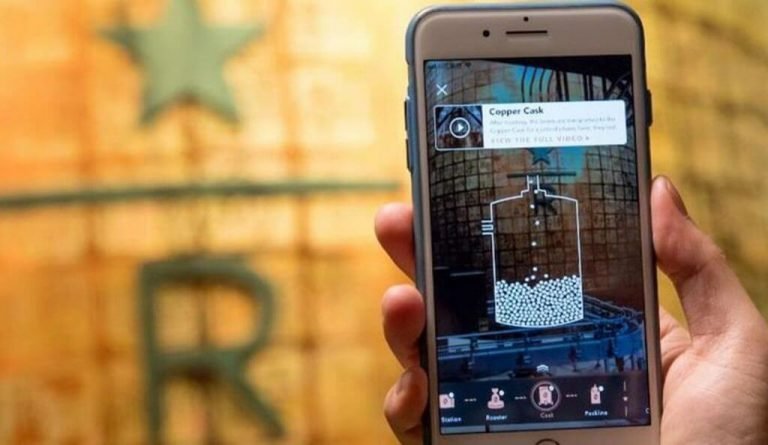#013
Experiential Marketing starts with AR
Shaping the marketing experience and creating a dialogue with consumers through a combination of technology and creativity

Starbucks is one of many international brands that actively engage digital technology to enhance the customer experience, using their app to participate in marketing and promotional activities such as lucky draws, completing payments, and obtaining related updates and news; Nike launched the Nike Run Club (NRC) app, which builds a community of shared social experience, with an added function of virtually trying on Nike products.
Why do these well-known brands do this? In an era where a full marketing experience is the new trend, the traditional method of marketing, which simply highlights the products function and characteristics, can no longer meet the consumers’ needs. Moving forward, experiential marketing is the way to go – tailoring the marketing experience, taking into consideration the consumers’ wants and desires, guiding them through the entire (purchasing) experience, therein strengthening the value of the brand in their eyes.
What is Experiential Marketing?
Bernd Schmitt introduced the concept of experiential marketing in 1999, stating that “value does not only reside in the object of consumption – which can be either a product or service – but also lies in the experience of consumption.” He presented five types of experiential marketing approaches, to redefine and create a new way of marketing through sense, feel, think, act, and relate.
Nowadays, many industries have adopted new, emerging technology in helping transform and shape a more comprehensive consumer experience. Among them, the application of immersive reality technologies such as augmented reality (AR), virtual reality (VR) and mixed reality (MR) are becoming increasingly popular.
Augmented Reality for branding and education: Starbucks Shanghai

In recent years, Starbucks has been researching and incorporating emerging technology to provide better service and new experiences to their consumers. They collaborated with Alibaba to launch an AR experience, binding the experience to the Starbucks Reserve® Shanghai Roastery in Shanghai, China. Visitors simply use their mobile devices to scan the QR codes instore to follow the journey of a coffee bean from the plantation into our cups, and collect badges while they are learning. This creates a new, experiential environment for these visitors, generating a stronger brand impression.
Augmented Reality for the next generation of gaming: Angry Birds
Angry Birds, that burst into our phones some years back, has recently made a comeback, launching their new game – Angry Birds AR-Isle of Pigs – available for iOS and Android. There are currently over 40 fun-filled levels, where players can launch an attack on AR buildings from all angles. AR combines real world scenario with the game, making the overall experience more realistic. Another way of thinking is that games are not only for entertainment and leisure, but also a form of marketing method, especially in this new business model.
Augmented Reality for virtual shopping: Wannaby
With aims to break the barrier of online shopping, reducing the returns rate, and to improve the overall shopping experience, Wannaby uses a combination of new technologies to create a virtual fitting app – Wanna Kicks. Using the app, users simply choose a sneaker design, then aim the camera at their feet to see how it looks as they are “wearing” the shoes. Although this virtual fitting experience cannot completely resolve this issue of online shoe shopping, as consumers’ concern on being unable to touch and feel the shoe to gauge the size and comfort levels is hard to address using AR. However, this solution allows consumers to actually visualize how the shoe looks like on them, adding to this consumer shopping experience.
Augmented Reality to create a new marketing experience
In a diversified business model, it is essential to consider the consumers’ thought process, purchasing environment, and the scalability capacity. It is important for a business to provide an immersive experience, especially more so one that the consumer can relate to. This design experience can be achieved through the combination of virtual and real-world technologies, to create a multifaceted marketing experience. The incorporation of AR in these marketing experiences can benefit businesses of any scale, in various industries such as retail, transportation, entertainment, and so on.
